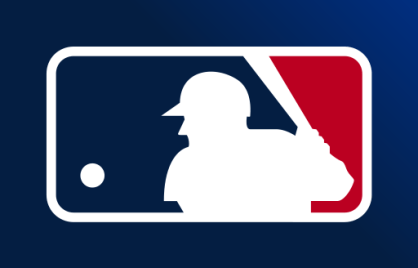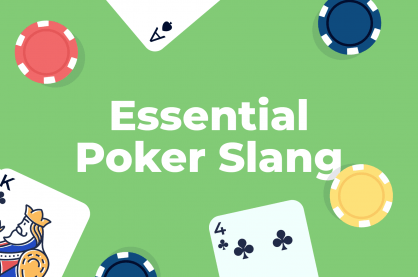Best and Worst Nosebleed Seats According to Fan-Driven Data
Just last week, $6,000 could get you 226 feet in the air at one of the worst seats in the Super Bowl LVIII. Pair that with the 2190-foot elevation at the Allegiant Stadium and you’re in for a highly probable nosebleed. That said, spirits (and heights) were high. This opened a broader conversation to be had surrounding cheaper stadium seating: as altitude climbs, does quality drop?
We dove deep into the data to evaluate factors that help define what a “good nosebleed” seat consists of, as oxymoronic as it sounds. The factors were as follows:
- View Quality: Assess the visibility of the playing field or stage from the nosebleed seats. Considering factors like sightlines and obstructions
- Height: Measure the height of the highest nose bleeds from the ground and compare that with the elevation of the stadium’s location
- Price: Evaluate the affordability of the nosebleed seats compared to other seating options in the stadium. Consider the starting price for nosebleed seats
- Accessibility: Examine the ease of access to and from the nosebleed seats using 8 ADA (Americans with Disabilities Act) factors
- Atmosphere: Evaluate the atmosphere and energy in the nosebleed seats section. Consider factors like crowd engagement and attendance
- Customer Reviews: Incorporate feedback and reviews from previous attendees who have experienced the nosebleed seats by scraping Tripadvisor reviews for “nosebleed” seats
With such factors defined we were able to collect the data and weigh each factor in accordance with its importance to overall “nose-bleedness.” From there, we indexed each stadium based on the weighted score.
Key findings:
- The worst stadium for nosebleeds goes to the Chicago Bull’s United Center scoring 12/100
- Green Bay Packer’s Lambeau Field was considered the #1 best stadium for nosebleeds
- The major league to have the overall best nosebleed seats was the NFL
- Coors Field was the location most likely to actually give you a nosebleed
The Nation’s Best Nosebleed Seats
When you see that your assigned seat is 600-something, some might gasp, but others might celebrate all the same. Not all nosebleed seats are created equal, and, in fact, some nosebleeds can actually offer a real good time, bar the minor altitude sickness.
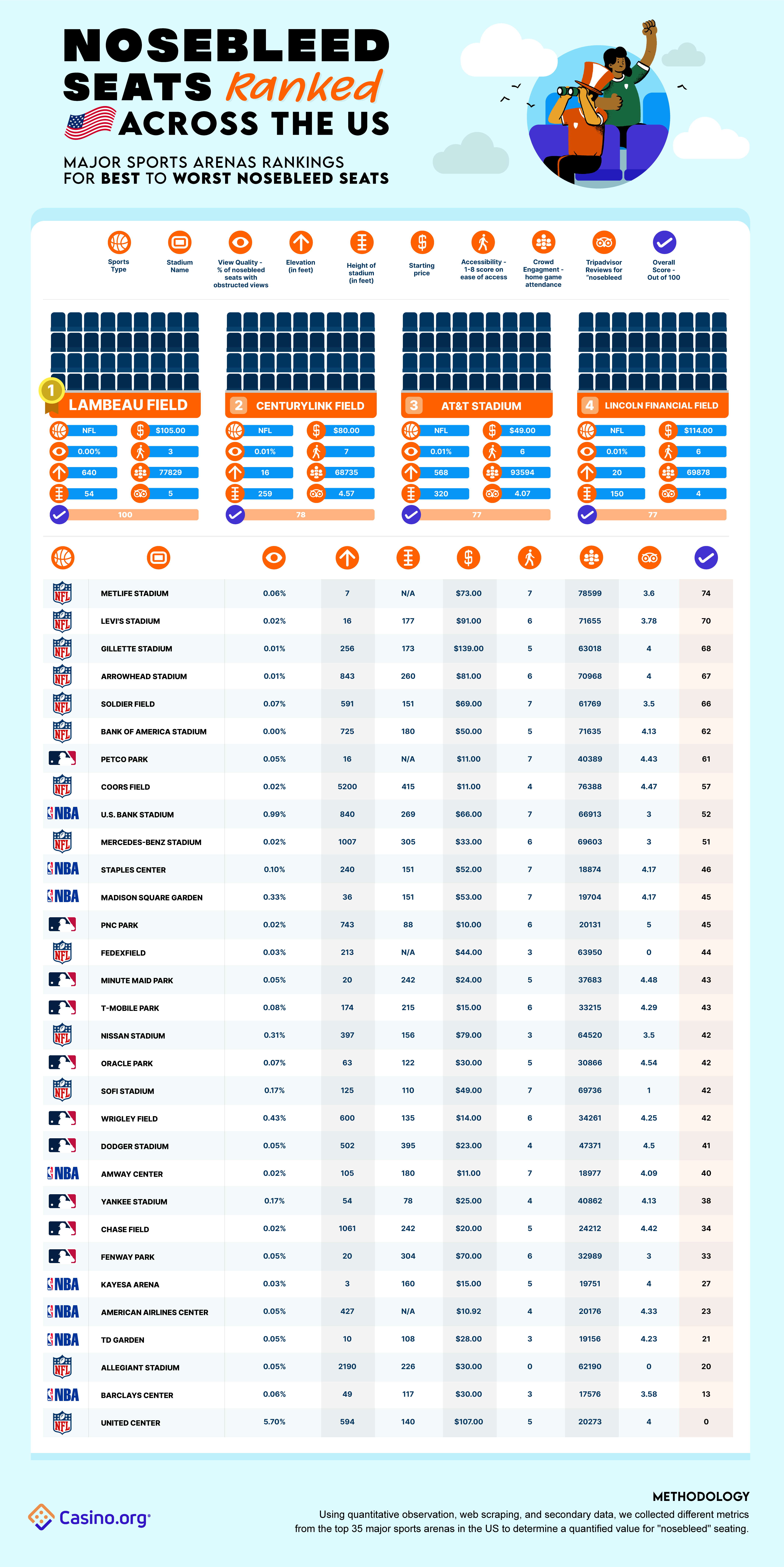
The best nosebleed seats in the US go to the Green Bay Packer’s Lambeau Field. It’s no secret that Cheeseheads know how to party, and the sentiment holds, even from the rafters. With the highest score on the nosebleed index, Packers fans take home a perfect 100/100. Although some of the pricier starting points in professional sports, a minimum of $105 if you’re lucky, Lambeau Field has proven it’s worth every penny. When we scraped the Tripadvisor reviews for nosebleed seats, we found nothing but positivity. One fan even went on to call it the “holy grail of the NFL.” How’s that for a rave review?
With a minimum amount of obstructed view seats and high crowd engagement scores, the nosebleeds in Green Bay are bound to be a joy. You may not get to indulge in the “Lambeau Leap” from way up above, but the fandom is all the same from VIP to cloud-level seating.
Keeping it in the NFL family, second place goes to CenturyLink/Lumen Field, home to both the Seattle Seahawks and the Seattle Founders. Seahawks fans pride themselves on their 2x Guinness World Record for crowd roar, if it gives any clue to how exciting these nosebleeds can be. Fans can expect high accessibility with the stadium scoring 8/8 on our ADA-factors score, a great atmosphere, and reasonably priced tickets, starting at $80.
Can we get a yeehaw? Third place goes to the Dallas Cowboys’ AT&T Stadium. To round off our top three, we’re lassoing one of Texas’ biggest and best sports arenas. AT&T Stadium takes the cake for unique reasons. In addition to traditional “nosebleeds,” this stadium added a standing section for the true devotees. They may not be the most comfortable seats in the house, sans seats of course, but at a value of $29, you get what you pay for, nosebleeds and all.
Worst Nosebleed Seats in the Country Goes to…
We don’t want to bull you around, on this one. Fans have rightful beef with as the Chicago Bull’s United Center comes in #1 for worst nosebleeds in the country. Despite having the second largest fanbase in the NBA franchise, the Bull’s home court isn’t paying nearly as much gratitude as it should. Their 16.7 million fans have to face steep inclines up to their 140-foot-high seats and at a pretty penny too. At one of the costliest starting price points out of all major league sports, even the least significant game starts at $107.00. And your precious life savings could look like this:

But hey, at least you’ll be able to see the giant, inflatable bull mascot from any seat in the house!
We’re tossing the ball to another NBA stadium for the second worst in nosebleed seats in the country. The Brooklyn Net’s home court of Barclay’s Center came in second to last for nosebleed seats. Scoring a 13/100, 70% lower than its NBA equivalent at large. Below we can see a WWE event held at the Barclays Center, where the user goes on to comment, “Clear view of the ring however if this was basketball or hockey the view would be blocked.”
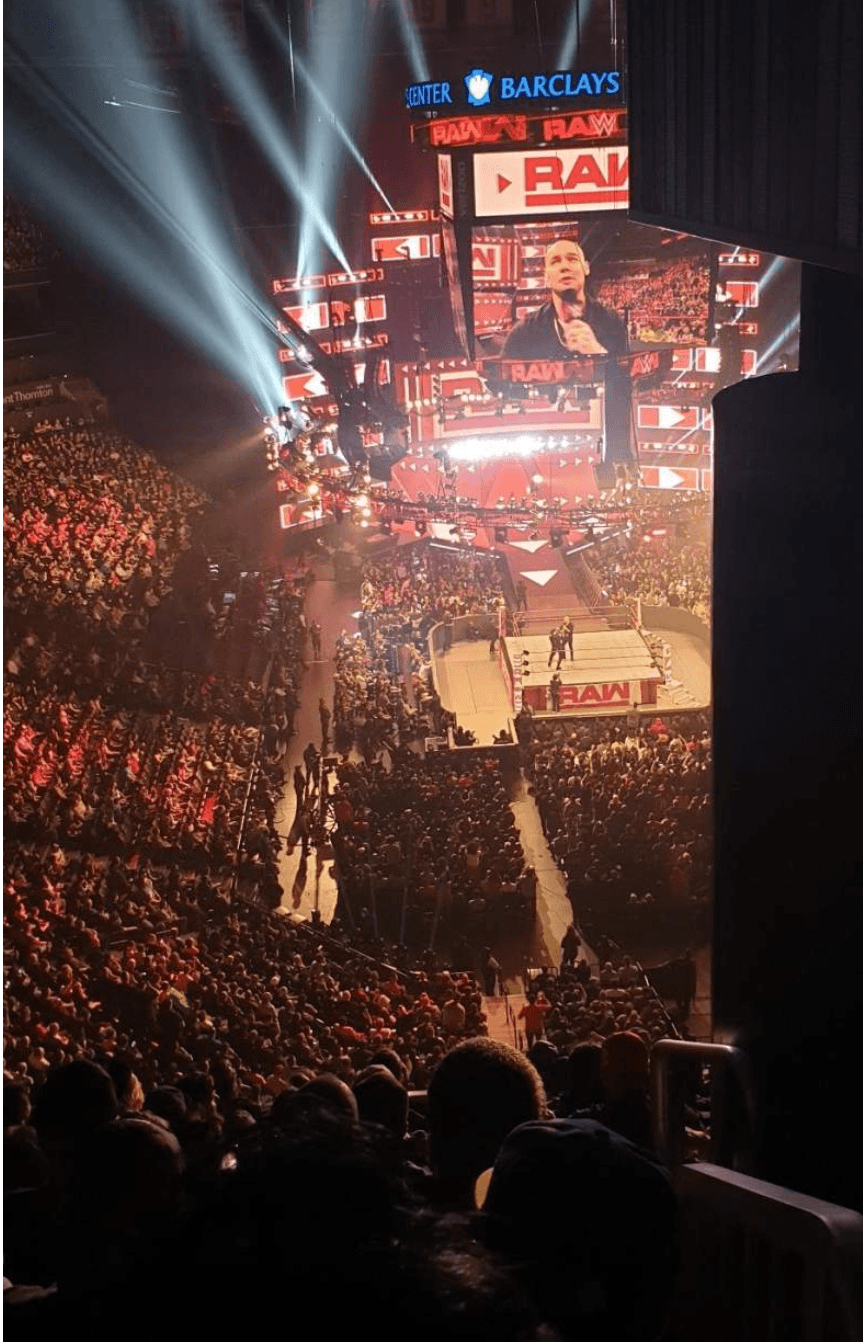
Despite recent stardom, the third to last place stadium goes to Allegiant Stadium. As one of the newer sports stadiums in the country, hopes were high for a five-star experience regardless of the section. Where they delivered in some areas, they fell short in others. Although Allegiant Stadium is the second-most expensive stadium in the world, most of that money was funneled into the VIP sections, with little thought to the high-up seats. The steeper-than-steep climb to the nosebleeds results in a low accessibility score paired with the literal probability of getting a nosebleed during the game (elevation + seat height), making the Raiders’ home stadium rank low.
Best Fans in the ‘Bleeds
They say “location, location, location” but for some die-hard fans, location is only a minor play in game day hype. Back to the hootin’ and hollerin’ of Texas, AT&T Stadium comes in first place for atmosphere and crowd engagement. On average, the Cowboys reel in 93594 fans for each home game. The stadium’s capacity sits at 105,000, meaning an 89% occupancy rate. Talk about die-hard fans!
Interestingly, the Cowboys also ranked the #1 most hated franchise in the league, according to a recent study. Perhaps the hate fuels their team spirit? Their attendance isn’t the only measure, as 1 in 10 Cowboy Fans also believe they have the best game-day atmosphere in the league. How ‘bout them Cowboys?!
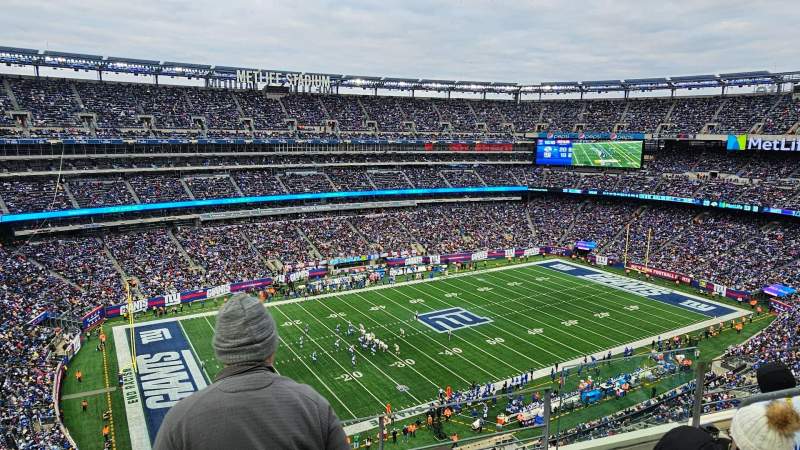
The Giants and Jets home arena brings out “the New Yorker in them” as the MetLife Stadium ranked #2 for best nosebleed atmosphere. The MetLife Stadium, in its full, actually ranks as one of the worst stadiums in the league, but nose-bleeders would beg to differ. When The Athletic interviewed NFL players, the majority listed MetLife as the worst to play in. Maybe the on-the-ground experience is a bust, but the turf is greener on the upper side at MetLife. Averaging some record attendance between the Jets and the Giants, the stadium stays lively. Amongst other factors, their crowd engagement score earned them second-best nosebleed fans.
Best and Worst Professional Sports League for Nosebleed Seats
Regardless of teams, each league has its own style of stadium. Basketball offers a narrow, but small setting, the NFL circles fans around its wide field, and baseball clusters spectators in a C-shape. Some leagues are better than others when it comes to nosebleed bliss.
The #1 major league sport for best nosebleed seating goes to the NFL. With the top 10 out of 35 major sports arenas in the US being NFL stadiums, football nosebleeds are the clear winner. The landscape of the field offers wide views for catching all the plays meaning minimally obstructed views as compared to the MLB, for example, which must accommodate nets, structural columns, etc. Plus a good ole’ fashion tailgate before the game doesn’t hurt to get even the worst of seats in the mood for fandom.
“Take me out to the ballgame” can be sung and enjoyed from even the highest of seats. The MLB ranked second for major league sports arenas. With the majority of MLB arenas boasting open-air seating and a tolerable height from the ground, these nosebleeds aren’t the best but aren’t the worst either.
Get your spectacles ready as the NBA ranks the worst major sports league for nosebleed seating. NBA arenas had the steepest climb out of all the leagues and a higher percentage of obstructed view seats. Better to let your wallet bleed and buy a better seat when it comes to the NBA.
Where you’re most likely to get an actual nosebleed
They don’t call it nosebleeds for nothing, right? Although meant to be hyperbolic, there’s some truth to the term. Higher altitudes, thinner air, and a drastic change in temperature can actually cause your gameday to go from rad to red-stained. So which stadiums do you have a higher chance of getting a nosebleed?
The Colorado Rockies’ home at Coors Field might make you a bit uneasy when it comes to altitude. At 5,200 feet above sea level, it’s the highest sports arena in the country. Air density is only 82% of what it is at sea level which could be just cause for both nosebleeds and curve balls according to some defensive fans. As the major league leader in “park factor”, we can understand why.
A bloody debrief
We hope you don’t ever have to put truth to the trope, but at least you know which stadiums to steer clear of and where you can rally with the rest of them. Put on your cheese hat and hit the nosebleeds at Lambeau Field or have a rowdy good time in the rafters at Lumen Field. On the flip side, and for the sake of your sinuses, stay away from the United Center and Barclays Center. You’ve been bloody warned!
Methodology
Using quantitative observation, web scraping, and secondary data, we collected different metrics from the top 35 major sports arenas in the US. We determined the 35 most “prominent” arenas by summing these factors:
- Capacity: The stadiums with the largest seating capacities
- Historical Significance: Stadiums listed have a long history of hosting important sports events and are iconic landmarks in their respective cities
- Professional Sports Teams: The stadiums are home to professional sports teams that compete in popular leagues such as the NFL, MLB, NBA, NHL, and MLS
We then weighed each factor for “nosebleeds” according to importance and relevance. Finally, we combined these numbers to create a score and rank regarding seats in the claimed “nosebleed” sections.
Fair Use
Feel free to use the data or visuals on this page for non-commercial purposes. Please be sure to include proper attribution linking back to this page to give credit to the authors.
For any press questions, please contact riley.clark[at]casino.org

